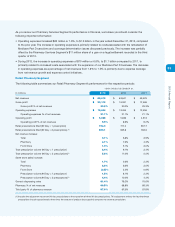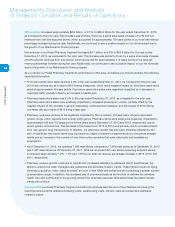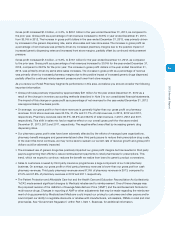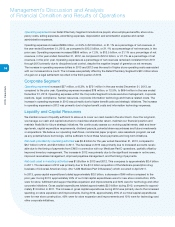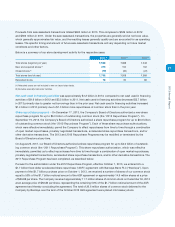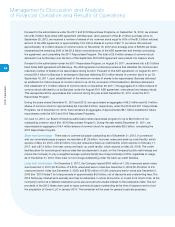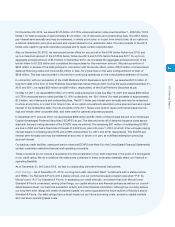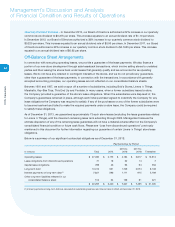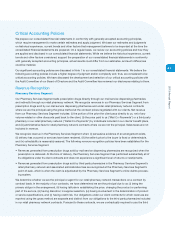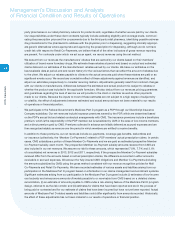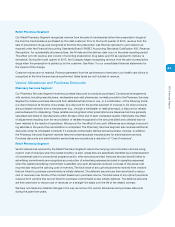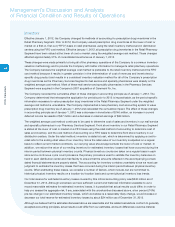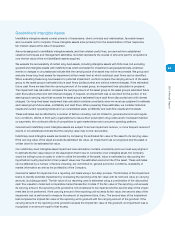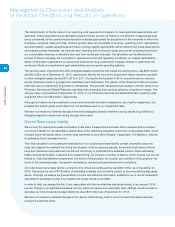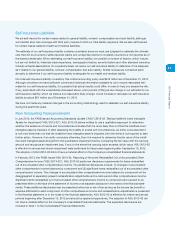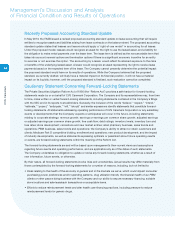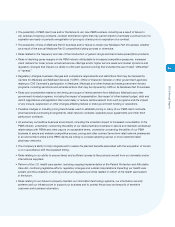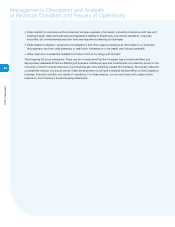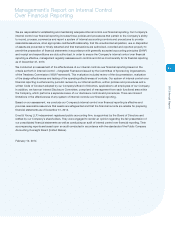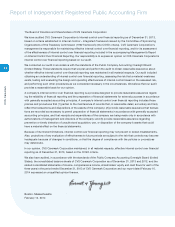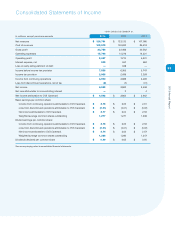CVS 2013 Annual Report Download - page 45
Download and view the complete annual report
Please find page 45 of the 2013 CVS annual report below. You can navigate through the pages in the report by either clicking on the pages listed below, or by using the keyword search tool below to find specific information within the annual report.
43
2013 Annual Report
Retail Pharmacy Segment
Our Retail Pharmacy Segment recognizes revenue from the sale of merchandise (other than prescription drugs) at
the time the merchandise is purchased by the retail customer. Prior to the fourth quarter of 2013, revenue from the
sale of prescription drugs was recognized at the time the prescription was filled as opposed to upon delivery as
required under the Financial Accounting Standards Board (“FASB”) Accounting Standards Codification 605,
Revenue
Recognition
. For substantially all prescriptions, the fill date and the delivery date occur in the same reporting period.
The effect on both revenue and income of recording prescription drug sales upon fill as opposed to delivery is
immaterial. During the fourth quarter of 2013, the Company began recognizing revenue from the sale of prescription
drugs when the prescription is picked up by the customer. See Note 1 to our consolidated financial statements for
the impact of this change.
Customer returns are not material. Revenue generated from the performance of services in our health care clinics is
recognized at the time the services are performed. Sales taxes are not included in revenue.
Vendor Allowances and Purchase Discounts
Pharmacy Services Segment
Our Pharmacy Services Segment receives purchase discounts on products purchased. Contractual arrangements
with vendors, including manufacturers, wholesalers and retail pharmacies, normally provide for the Pharmacy Services
Segment to receive purchase discounts from established list prices in one, or a combination, of the following forms:
(i) a direct discount at the time of purchase, (ii) a discount for the prompt payment of invoices or (iii) when products
are purchased indirectly from a manufacturer (e.g., through a wholesaler or retail pharmacy), a discount (or rebate)
paid subsequent to dispensing. These rebates are recognized when prescriptions are dispensed and are generally
calculated and billed to manufacturers within 30 days of the end of each completed quarter. Historically, the effect
of adjustments resulting from the reconciliation of rebates recognized to the amounts billed and collected has not
been material to the results of operations. We account for the effect of any such differences as a change in account-
ing estimate in the period the reconciliation is completed. The Pharmacy Services Segment also receives additional
discounts under its wholesaler contracts if it exceeds contractually defined annual purchase volumes. In addition,
the Pharmacy Services Segment receives fees from pharmaceutical manufacturers for administrative services.
Purchase discounts and administrative service fees are recorded as a reduction of “Cost of revenues”.
Retail Pharmacy Segment
Vendor allowances received by the Retail Pharmacy Segment reduce the carrying cost of inventory and are recog-
nized in cost of revenues when the related inventory is sold, unless they are specifically identified as a reimbursement
of incremental costs for promotional programs and/or other services provided. Amounts that are directly linked to
advertising commitments are recognized as a reduction of advertising expense (included in operating expenses)
when the related advertising commitment is satisfied. Any such allowances received in excess of the actual cost
incurred also reduce the carrying cost of inventory. The total value of any upfront payments received from vendors
that are linked to purchase commitments is initially deferred. The deferred amounts are then amortized to reduce
cost of revenues over the life of the contract based upon purchase volume. The total value of any upfront payments
received from vendors that are not linked to purchase commitments is also initially deferred. The deferred amounts
are then amortized to reduce cost of revenues on a straight-line basis over the life of the related contract.
We have not made any material changes in the way we account for vendor allowances and purchase discounts
during the past three years.


